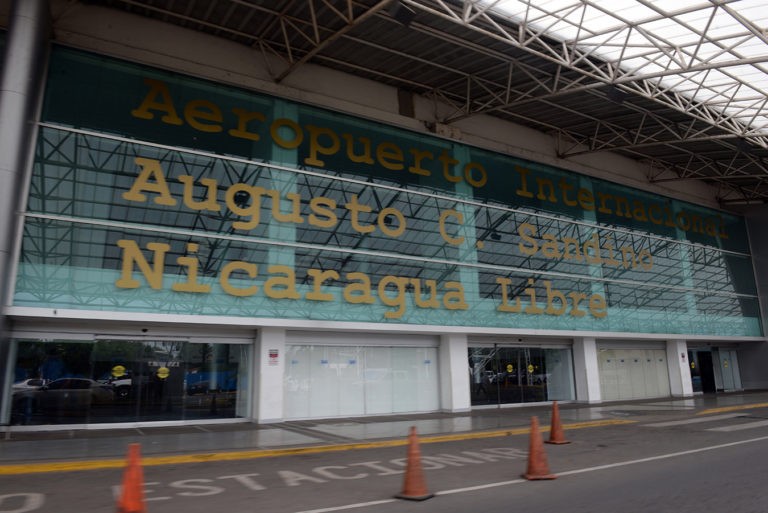Nicaragua May Go without Key US Airlines for Rest of 2021

By Mabel Calero (La Prensa)
HAVANA TIMES – Sixteen months have now passed since March 27, 2020, when American Airlines suspended flights to Nicaragua. The country remains without arrivals or departures from any major North American airlines. American, together with United Airlines and Spirit, still decline to submit to the demands of the Ortega regime.
After several changes, America eventually echoed United Airlines in their decision to postpone returning until October. On Friday, July 9, however, the Aeromundo travel agency informed that American Airlines wouldn’t be returning in October, but possibly push back to November or beyond. For the moment, United hasn’t changed their date, but leaders in the field feel they’ll very probably do so soon. Spirit, meanwhile, hasn’t defined any date.
If current conditions continue through the end of the year, it’s thought, the US airlines may well decide to extend their absence through the rest of 2021. In that case, the on-again, off-again dates will continue into 2022.
The change announced by American Airlines comes precisely in the same month that AeroMexico announced its return. They plan to offer flights Tuesdays, Thursdays and Saturdays in a small E190 plane with room for 99 passengers. The return of the Mexican airline had raised hopes in the tourist sector that the US airlines might finally decide to resume flights in October. However, it’s not looking that way.
Up until now, Avianca and Copa are the only international airlines flying to Managua. Avianca resumed operations in September of last year, and Copa began in January 2021. This month, AeroMexico will be joining them.
US Airlines remain firm
Carlos Schutze, president of the Nicaraguan Travel and Tourism Association and vice president of the Nicaraguan Tourism Chamber, doubts that these companies will change their stance while current conditions continue.
The Nicaraguan government has adopted and maintains an extremely strict public health security protocol for airlines. They must send the passenger list and proof of each passenger’s negative PCR COVID test [different from the rapid Antigen tests available in many airports] to the Civil Aeronautics Board and the Health Ministry in advance. The government demands that the flight crew present current negative COVID tests as well, each time they land. The latter is the chief bottleneck for the airline companies.
“What’s affecting us are the requirements for operating. The US airlines can’t demand that the pilots take constant COVID tests. Also, we don’t know if they’re willing to handle passenger lists and test results 72 hours in advance, because last-minute purchases are important for the airlines,” said Schutze.
The tourism leader doesn’t think it’s a problem of demand. “Each airline has its reasons, but I don’t believe it’s a question of demand, especially in the case of American, which used to have three flights daily. We’re hoping for a change in guidelines with the [advance of] vaccination, so that they return soon. Meanwhile, it’s likely that [United] will postpone its return, as will Spirit, because, as I explained, it’s a complicated matter for the US airlines.”
“In the case of the charter flights, they ask for volunteers [among their crew] to take the test, and it’s once a week. But for the commercial flight companies, they’d have to be taking COVID tests every three days, or else rotate personnel. In addition, you have the matter of the lists in advance, which complicates matters for them, since they work through automatic call centers,” Carlos Schutze explained.
In 2020, a total of 67,919 passengers arrived from the United States; 11,838 from Canada; and 3,771 from Mexico. The advantage of having these visitors is that they wield substantial buying power.
Lost year for Tourism
Leonardo Torres, president of the Nicaraguan Chamber of Micro, Small and Medium Tourist Enterprises, notes that these developments are discouraging to a sector that depends greatly on international tourism.
“Maybe they’re waiting to come back at peak season in December. We’ve already lost almost two years [of tourism] and this has messed us up. (…) We’ve seen a lot of pessimism regarding 2021. In 2020, we didn’t even reach $200 million dollars in revenue. Initially, we were hoping for around US $340 million this year but now we think our sales will total around $185 million, or in the best case scenario, we could end up tied with last year,” stated Torres.
He sees the crisis worsening, due to a combination of factors. “You have the matter of connectivity with the US airlines. That may be affecting us more than we think. Also, I don’t know if the US [State Department] travel alerts are harming us. When things were normal, they didn’t affect us that much. The image of the country, the new wave of the pandemic, and now, Pfizer is talking about a third vaccine dose to protect against the Delta variant, and some countries are shutting down again. All that adds up.”
Schutze placed more weight on the postponements of the US airlines. “Every time one of the airlines that was scheduled to resume flights doesn’t do so, we lose. These postponements lessen the volume of traffic. Luckily, Avianca has increased to two daily flights, and is filling the vacuum left by American Airlines. United Airlines only used to fly twice a week, so that’s not a lot of [lost] traffic,” he continued.
Both Torres and Schutze feel that the new AeroMexico flights could help the sector. “There’s demand for AeroMexico, and they can connect well to other countries. Many prefer to fly via Mexico. Also, there are certain people who are vacationing in Cancun, one of the most highly recommended destinations during the pandemic,” Schutze stated.
“Hopefully, AeroMexico will help. We hope so, because if they don’t see sufficient demand, they could stop once again. They ceased flying here once before, because there wasn’t a lot of demand,” Torres concluded.





